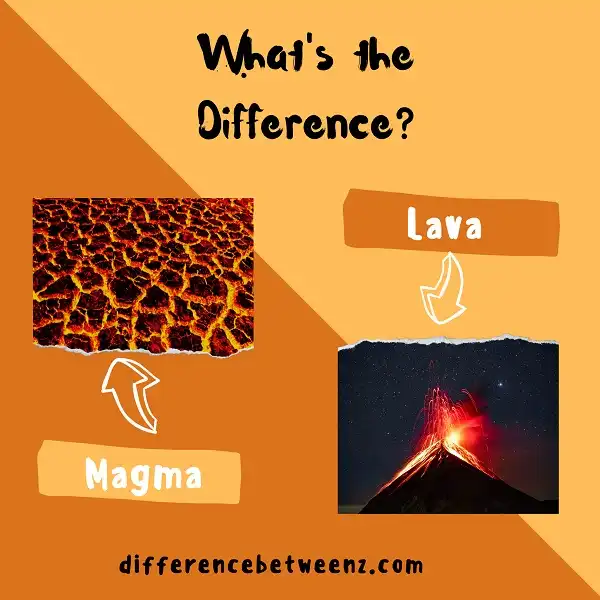What is the difference between magma and lava? Most people use the two words interchangeably, but there is a big difference between the two! Magma is the molten rock beneath Earth’s surface, while lava is molten rock that has reached Earth’s surface. Magma can become lava when it blasts through Earth’s surface. The eruption of Mount Vesuvius in 79 AD was so powerful that it created a cloud of ash that traveled more than 100 kilometers (62 miles) and caused darkness for days at a time. The eruption of Mount Saint Helens in 1980 was even more powerful, generating a pyroclastic flow — an avalanche of hot gas and volcanic material — that traveled more than 16 kilometers (10 miles).
What is Magma?
Magma is molten rock that is under the earth’s surface. Magma is formed when the earth’s mantle (a layer of the earth) melts. When the magma is thick, it doesn’t flow very well. When the magma is thin, it can flow for long distances. Magma can be found in volcanoes, and can also be found on the ocean floor. The Earth’s crust is made up of solid rock. The crust is thin and sits on the magma. The earth’s mantle is made up of hot rock. The mantle is thick and sits below the crust. The mantle melts to form magma. Magma can be found in volcanoes and in the ocean floor.
What is Lava?
Lava is molten rock that has been expelled from the interior of a planet or satellite. When lava cools and solidifies, it forms igneous rock. Lava occurs on Earth’s surface mainly at plate boundaries. When two plates move apart, the molten rock rises to the surface and forms rift zones. The Hawaiian Islands were formed by lava from volcanoes that erupted along the Pacific Plate’s edge. Lava can also be found at hotspots, which are areas where the magma from the mantle rises to the surface. One example is the Yellowstone Caldera, which was formed by a massive volcanic eruption about 640,000 years ago. Lava can be extremely hot, reaching temperatures of 1,000 degrees Celsius or more.
Difference between Magma and Lava
Magma is molten rock that is found beneath the Earth’s surface. Lava is molten rock that has been ejected from an active volcano. While both magma and lava are molten rocks, there are some key differences between the two. Magma is found deep below the Earth’s surface, whereas lava is found on the surface. Magma is also much hotter than lava. Finally, magma contains gases, while lava does not. These gases can cause explosive eruptions when they escape from a volcano. For these reasons, magma and lava are not interchangeable terms. Understanding the difference between them is important for anyone interested in volcanoes or geology.
Conclusion
Magma and lava are both molten rocks, but they have different compositions. Magma is made of silicon dioxide, aluminum oxide, and potassium oxide. Lava is made of silicon dioxide and magnesium oxide. The temperatures at which magma and lava solidify also differ; magma crystallizes at a temperature of 1,200 degrees Celsius, while lava crystallizes at a temperature of 950 degrees Celsius. These differences account for the different physical properties of these two types of molten rock.


